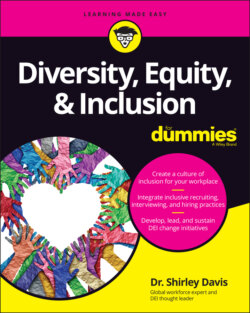Читать книгу Diversity, Equity & Inclusion For Dummies - Dr. Shirley Davis - Страница 50
Increasingly Underskilled
ОглавлениеA major trend shifting the workplace demographic is the growing skilled worker shortage. Skilled workers include electricians, plumbers, HVAC technicians, construction managers and workers, carpenters, and so on. Closing this skill gap with technology, more specifically automation and artificial intelligence, is on the horizon, which means workers skilled in the technology that creates and produces these solutions are needed as well.
Accenture’s Future of Work research group found that countries that don’t invest in technological skill building may lose $11.5 trillion of economic growth. For example, up to 90 percent of human labor time may be replaced by automation and artificial intelligence (though actual numbers vary by industry and type of work). If they don’t address the skills gap and shortage, the following players face these potential economic losses by 2030:
China: 1.7 percent loss of annual growth
Mexico and South Africa: 1.8 percent loss of annual growth
United States: $975 billion
Germany: $264 billion
So how does this information impact the nature of your own business operations, product offerings, and consumer base? Better yet, what can you do differently in your business to address these potential skill shortages? What type of work can you augment with intelligent technology and what work can artificial intelligence complete?
Creativity, social and emotional intelligence, critical thinking, and complex reasoning are noted skills that are increasingly vital in every workplace role. These skills are also essential to fostering and maintaining a diverse, equitable, and inclusive workplace. The need to focus on building these skills along with technological skills is leading workplaces to require workers with a variety of skills and to make the worthwhile investment in broadening those skills.
Following are three tips for helping underskilled workers to build essential skills:
Expand experiential learning opportunities through technical simulation training, on the job training, and apprenticeships. Add AI and virtual reality to immersive learning experiences.
Build individuals and institutions. Focus on the professional development workers as individuals that have broad skills bases. Incentivize achievements at the individual and team/department levels.
Empower learners and those in more vulnerable categories, such as older workers and lower-skill roles. Create career pathways and professional development/learning plans. Support workers through grant programs and tuition reimbursement for lifelong learning. Provide training in modular and creative ways that fit the individual learner’s lifestyle.
